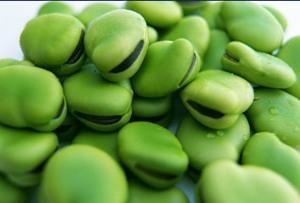A summer resident is a beginner. Grow beans!
 In ancient Russia, beans were considered the main food of the common people and one of the main vegetable crops. But after the appearance of "Petrovsky" potatoes, the planting of beans gradually decreased. In tsarist Russia, the consumption of beans in Russian gardens fell by three times. And in modern summer cottages and gardens they are not at all! It's a pity…
In ancient Russia, beans were considered the main food of the common people and one of the main vegetable crops. But after the appearance of "Petrovsky" potatoes, the planting of beans gradually decreased. In tsarist Russia, the consumption of beans in Russian gardens fell by three times. And in modern summer cottages and gardens they are not at all! It's a pity…
Vegetable beans contain components unique to the human body: protein, up to 35%; light fat, 15%, as well as rare mineral salts. Our body easily assimilates any beans, both mature and green - early, not yet "ripe".
As an “energy drink for nutrition,” beans are 3 times more caloric than potatoes and 7 times more than cabbage.
It is very useful for children to eat both young unripe beans (raw) and fully ripe, dried up. Due to their high-quality hardness, they already need to be boiled or stewed. Beans are not picky about their predecessors in the garden, like soybeans or peas, but after them, in the next season, any vegetables and plants grow well. It has been noted that their powerful root system loosens and enriches even the most impoverished soils with microelements.
The principle of action is similar to the one-year phacelia. (Phacelia, this plant is green manure, that is, a living green fertilizer). Still, beans prefer loamy soils, and light and moist soils are not desirable. If you choose the worst area for the beans, then in the fall you need to add a little manure, potassium salt and superphosphates. Dig up all this mixture onto the "bayonet" of the shovel. And, in the spring it is enough to loosen the soil and start sowing.
You can sow beans from the third decade of April to the end of May. It is important to sort out the seeds before planting, remove the damaged ones. To revitalize the exchange processes in beans, it is useful to soak them in water (50–55 degrees) for 10 minutes, and then, to accelerate germination, place the beans in cold water. But, no longer than 2 hours. And the planting material is ready!
Beans are, of course, a very healthy vegetable, but since this article is for beginners, let me share my experience. I had a small area near the border and in the shade, where I fought unsuccessfully with the wireworm. Wheatgrass grew behind the fence, and the neighbor asked not to clean it, she had rabbits. They advised to sow beans along the fence. Sowed, but no shoots. She sowed the germinated again, marked the holes. Without waiting, I dug it out. Where there is no bean, and where the wireworm sits in it. So I realized that he does not scare away, but attracts the wireworm, or distracts from other vegetables. And also on the same bean story. Children helped to plant potatoes. The granddaughter got tired of throwing one bean into the hole, she quietly left for 6-7, so that these nasty seeds would end sooner. The beans were ugly, but there weren't enough potatoes where the granddaughter did the housekeeping. It was not a pity to pull the beans, there were a lot of them, and occasionally wireworms were found on the cut in the stem 10 centimeters from the ground. Then we got rid of them, but this does not apply to beans. This is what they write, the beans scare away the wireworm, but in my experience, the opposite is true.